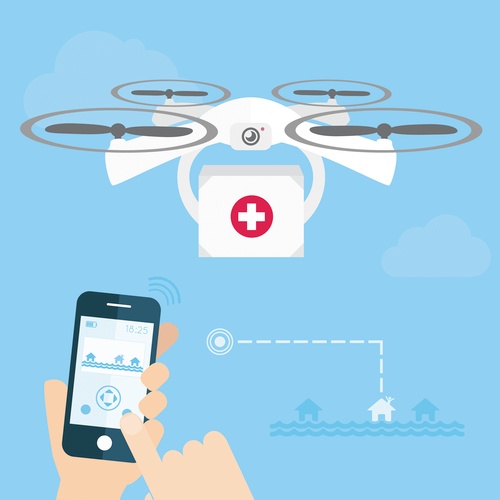I recently came upon a particular device and system that focuses on remote patient monitoring in a way that might be helpful for physical therapists.
 It seems we are all scrambling to meet the various needs of those we interact. Our first responsibility is to the patient. Each patient is a bit different and has slightly different needs. I believe we always need to determine the best way we can fulfill the patient’s needs.
It seems we are all scrambling to meet the various needs of those we interact. Our first responsibility is to the patient. Each patient is a bit different and has slightly different needs. I believe we always need to determine the best way we can fulfill the patient’s needs.
For example, with the pressure to provide value and cheaper care, we need to stay aware of new options as they become available to us. As new options become available to us, we aren’t going to have evidence be a guide for our care delivery – we will need to design our own screening processes to determine which patients a new option is appropriate. We will also have to have strategies in place to evaluate whether implementing a new option in care delivery is not only feasible but also whether it really changes anything. The biggest factor, if you place the patient in the center and forefront of care, is whether the new option was truly beneficial for the patient.
I recently came upon a company called Claris Reflex. My attention was perked. Right now I have a “smart” treadmill that interfaces with a tablet. I am able to have all sorts of data at my fingertips about how my patient performed during the session. The patient is able to have immediate feedback on performance. I am able to provide functional goals and the patient is far more easily able to learn the movement pattern working with the devices than I have ever been able to do with verbal feedback or manual cues. There is also an opportunity to save a session and print it or add it to the patient’s medical record.
The focus of Claris Reflex is knee joint replacement care. There are already some bundled care initiatives and if joint replacement care becomes bundled across the board, everyone caring for these individuals may be looking at ways to improve outcomes. If most physical therapists are like me, then you all worry about the progression of gaining motion after the replacement. Patients are definitely able to do their home exercise program to increase their motion. The biggest problem is that some patients are a bit fearful and really aren’t willing to move their knee into a bit of discomfort for fear of damaging the knee. Another problem is that for some patients as they gain more and more motion, yet are not quite at the 120 degrees of flexion, they don’t have an accurate way to know they still have more motion that needs to be acquired. The same thing happens for some patients who have not felt their knee go straight in forever and their ability to determine their knee is straight is not accurate. I liked what Claris Reflex had to offer for those patients.
So the question then becomes, how do we adapt our care to the opportunities that technology allows us to take? I mean, I know that every patient I treat does not need remote monitoring. How much time is acceptable to allow a patient to independently manage their care? When is the best time to introduce patient remote monitoring? What does it do to patients mentally and their pride of achieving if remote monitoring becomes a standard of care? I guess what I mean by this is that there are a lot of patients who do take pride in independently doing the work to achieve. I wonder if introducing technology for everyone without considering the individual will have negative ramifications.
I definitely appreciate technology. It seems we will need to take some time to do some thinking before automatically bringing technology into the care.
- Which patients are the ones that need remote monitoring – which patients are at risk of failing to achieve results?
- Does the benefit outweigh the cost of the technology?
- Could there be detrimental effects using the new technology?
- How does the clinician’s role change?
- Are processes in place to help the clinician succeed as the new technology is implemented into practice?
We are going to see more and more options for remote monitoring. I think we need to have conversations in our heads and also within our organizations to help determine the best patients to incorporate this kind of intervention.
Until next time,
~Selena

Leave a Reply